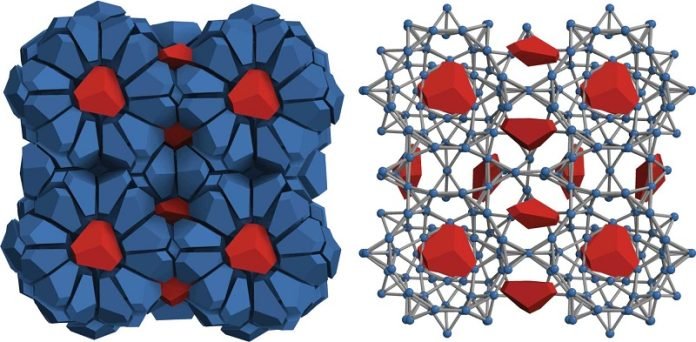
Ever thought about how amazing it would be if we could manipulate light, just like we do with other materials?
A team of scientists at the University of Michigan might be onto a cool way to do just that, thanks to some really tiny structures made from particles that are even tinier!
These researchers have used computer simulations to show how they can create cage-like structures using nanoparticles – particles that are super tiny, like thousands of times smaller than the thickness of a human hair.
This could pave the way to new materials that control light in ways we’ve never seen before. This process also led to an unusual effect they’re calling ‘entropy compartmentalization’ – but we’ll come back to that.
Sharon Glotzer, who led the study, said, “We are developing new ways to structure matter across scales, discovering the possibilities and what forces we can use.”
You’ve probably heard of entropy as the amount of disorder in a system, but it’s a bit more than that. It’s about a system’s tendency to spread out and fill as many states as it can.
This can look like disorder, but if you put things in the right size box, they can arrange themselves into an orderly structure. The scientists used this idea to get nanoparticles to form specific structures.
Previously, Glotzer’s team had shown that particles shaped like two pyramids stuck together at their bases will form structures resembling ‘fire ice’ if you put them in a small enough box.
Fire ice is a substance found in abundance under the ocean floor. It’s formed by water molecules that create cages around methane.
It’s interesting because it can burn and melt at the same time!
The team wanted to take this a step further and see if they could make their nanoparticle structures have gaps that they could fill with other materials to change their properties. To do this, they had to change the shape of their nanoparticles, so they took the three central corners off each one.
This resulted in a structure where spaces appeared, but the sides of the pyramids were still intact enough that they didn’t start organizing in a different way. When they added a second shape of nanoparticle, that shape filled the gaps in the structure.
But the cool thing is, there was no glue holding the nanoparticles together. The structure was completely stabilized by entropy. The ‘host’ particles almost froze, moving together like a rigid object, while the ‘guest’ particles were spinning around like crazy.
This led to the concept of ‘entropy compartmentalization’, where the freedom to move was mostly confined to the guest particles.
This exciting discovery shows how our understanding of basic physics principles like entropy can be used in developing advanced materials, like ones that can manipulate light.
Who knows what amazing technologies this might lead to in the future?



